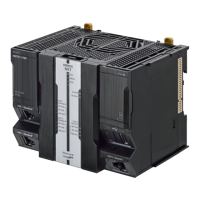1 Introduction
1-2
NJ/NX-series CPU Unit Built-in EtherCAT Port User’s Manual (W505)
1-1 Introduction to EtherCAT
EtherCAT (Ethernet Control Automation Technology) is a high-performance industrial network system
that enables faster and more efficient communications based on Ethernet. Each node achieves a short
communications cycle time by transmitting Ethernet frames at high speed. Furthermore, even though
EtherCAT is a unique protocol, it offers excellent general-purpose applicability. For example, you can
use Ethernet cables because EtherCAT utilizes standard Ethernet technology for the physical layer.
And the effectiveness of EtherCAT can be fully utilized not only in large control systems that require
high processing speeds and system integrity, but also in small and medium control systems.
EtherCAT provides the following features.
The I/O response time from signal input to signal output has been significantly reduced. By fully utilizing
the optimized Ethernet frame bandwidth to transmit data using a high-speed repeat method, it is possi-
ble to efficiently transmit a wide variety of data.
EtherCAT does not send data to individual slave nodes on the network, instead, it passes Ethernet
frames through all of the slave nodes.
When frame passes through a slave node, the slave node reads and writes data in the areas allocated
to it in the frames in a few nanoseconds.
The Ethernet frames transmitted by the EtherCAT master pass through all EtherCAT slaves without
stopping. The last slave returns all of the frames, which again pass through all of the slaves before
returning to the EtherCAT master.
This mechanism ensures high speed and realtime data transmission.
1-1-1 EtherCAT Features
High-speed Communications at 100 Mbps
1-1-2 EtherCAT Communications
IN
OUT
Slave
• Output data addressed to the local node is read.
• Input data is written.
Ethernet frames
EtherCAT master
Slave
data
Slave

